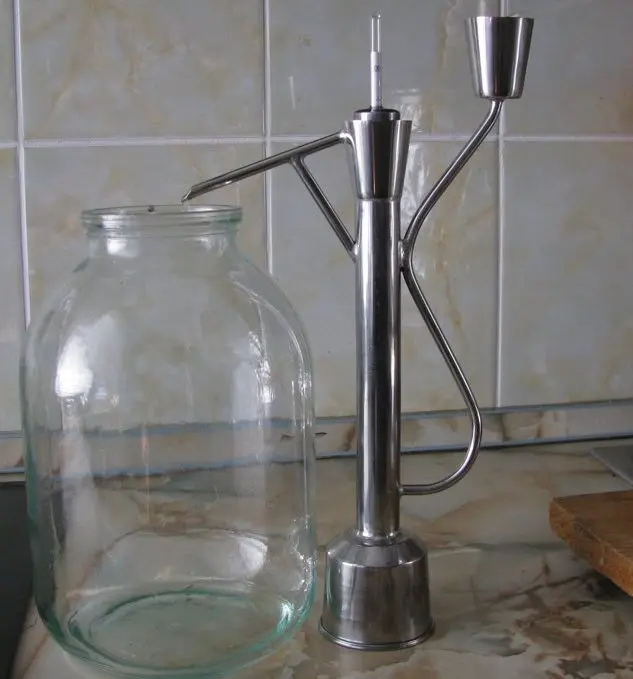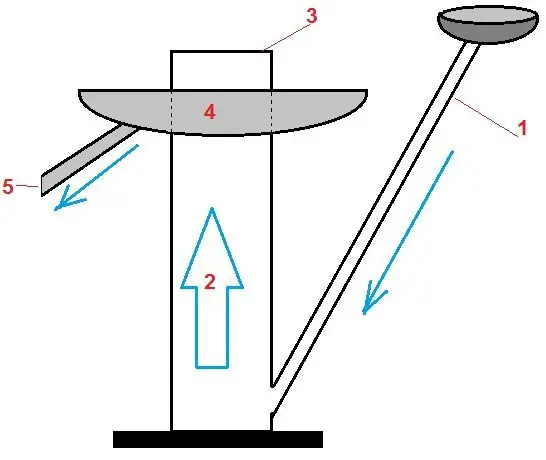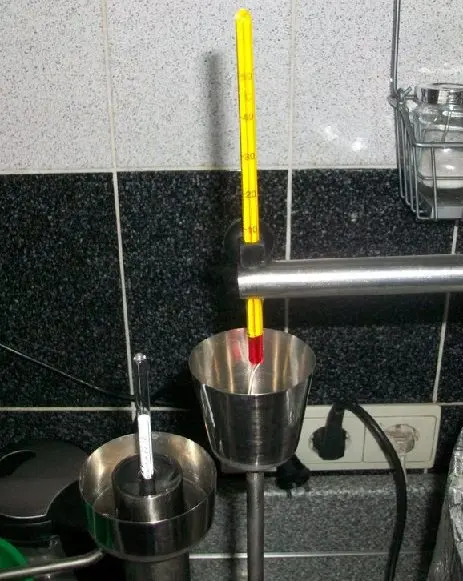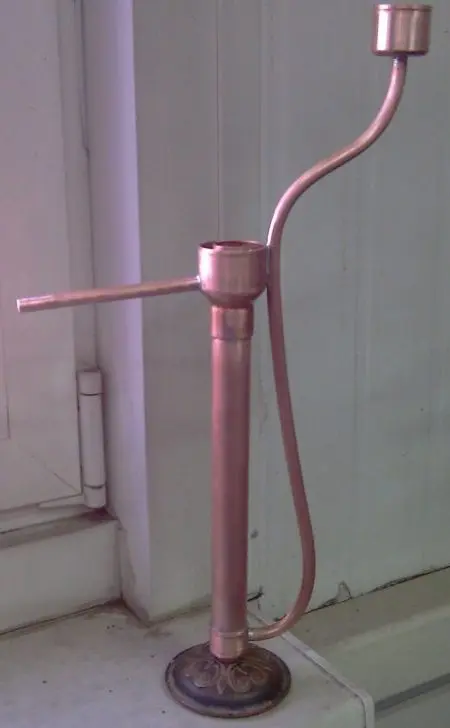Contents
To correctly cut off the “tails” and determine the moment when distillation is completed, it is important for moonshiners to know the strength of alcohol in the stream. The folk method is to drive while it burns in a spoon. More advanced distillers, towards the end of the process, pour the outgoing product into small volumetric flasks, where the alcoholometer is lowered. The method is accurate but time consuming. Home craftsmen have found a way to automate this process by creating a “Moonshine Parrot” that measures the strength online (in real time with some delay). The device can be used with a distiller of any scheme.
Parrot for moonshine still – a device for automatic and continuous control of the strength of the water-alcohol mixture at the outlet of the moonshine still (cooling module). The theoretical basis is based on elementary physics – the law of communicating vessels and the Archimedean force. The main part of the device is made in the form of a cylinder filled with moonshine, in which a hydrometer floats. The distillate supply pipe from the coil is connected to the vessel at the very bottom, and the pipe leading to the receiving tank is connected from above.

The shape of the bends of the tubes, the finished structure resembles a bird, hence the name – “parrot” or in the English manner “parrot”.
Principle of operation
Moonshine through the inlet tube (1) from the distiller refrigerator enters the measuring cylinder (2) with a hydrometer, passes to the end of the “parrot” body (3), then overflows, enters the safety funnel (4) and flows into the receiving container through the outlet tube ( 5).

Design features
Most of the “parrots” for alcohol are simply substituted with a receiving funnel to the moonshine, but some models are fixed to the coil “tightly” with connecting tubes. In the first case, the advantage is in versatility, in the second – higher reliability, since there is no risk that the device will accidentally turn over.
Sometimes, to improve accuracy, the “parrot” is equipped with a thermometer that measures the temperature of the liquid, and then they make a correction for the fortress depending on the temperature.

Advantages:
- control of the fortress in real time;
- ease of manufacture and operation;
- low cost (in comparison with other methods);
- suitable for any moonshine stills, mash and distillation columns.
Disadvantages:
- the error of even a correctly made device is 2-3% (for more accurate measurements, the liquid must have a temperature of strictly 20 ° C and be standing, not flowing, which cannot be achieved in this design);
- inertia – real readings are visible on the hydrometer with some delay (after the volume of the flask is completely replaced by moonshine with other strength indicators).
Proper design and operation create a measurement accuracy that is sufficient to determine the end of the distillation or the start of the selection of “tails”, which is the main task of the device.
Operating technique
- Before starting distillation (rectification), connect the moonshine extraction hoses to the “parrot” inlet tube or substitute a receiving funnel to the outlet of the coil.
- Substitute (attach with hoses) a container for collecting the main product under the “parrot” outlet tube.
- Insert the alcoholmeter into the graduated cylinder.
- Start heating and distillation, then disassemble the structures in the reverse order.
It is advisable to know the temperature of the moonshine and adjust the hydrometer readings based on the values obtained by the calculator.
Counting in progress…
Enter the initial data on the left
Real strength: % (vol.)
How to make a parrot for moonshine with your own hands
We will consider the requirements for the device in terms of safety and functionality, without touching on the issues of soldering metals, bending pipes and the nuances of connecting different elements.
1. Material. Food-grade stainless steel, copper and glass are suitable for the manufacture of the “parrot”. Some craftsmen make the device out of plastic or plumbing pipes, but keep in mind that plastic and other materials release harmful substances when in contact with alcohol. The most common option is stainless steel.
2. Dimensions. On the one hand, the alcoholometer should float freely in the flask, without touching the bottom and walls of the vessel. On the other hand, the larger the volume of the “parrot”, the lower the speed of the system’s response to changes in the strength of the liquid (inertia increases).
We have to look for the optimal proportions for a specific hydrometer. In height, the flask should be 2-3 cm higher than the used alcoholometer and at least 4-6 mm wider in diameter of its most dimensional part – the bottom with a weight. In most cases, tubes with an internal diameter of 26-30 mm and a length of 25-28 cm are used. The longest of the common alcohol meters is ASP-3 40-70 (diameter 19 mm, length 220 mm). Household (glass) analogues are usually smaller.
Attention! If the hydrometer fits snugly against the walls of the flask, a piston effect occurs, which significantly reduces the accuracy of measurements. With a lack of height, the alcoholometer simply will not rise, and accordingly, it will not show the correct values.
In order not to slow down the operation of the moonshine still, the diameter of the inlet and outlet pipes of the “parrot” must be equal to or greater than the diameter of the coil tube.
3. Features. The funnel of the inlet tube is necessarily located above the upper part of the “parrot” flask, and the hydrometer tube is above the drain level, otherwise the law of communicating vessels will not work.










